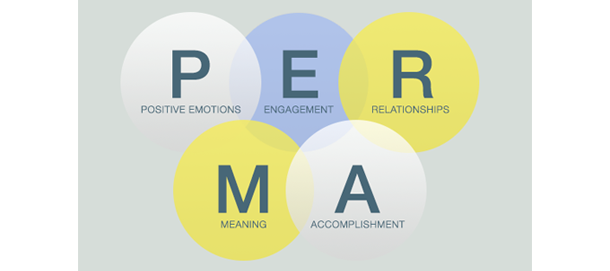In a Nutshell: PERMA Model of Positive Psychology
The PERMA Model was first introduced by Martin Seligman, one of the founders of the positive psychology movement, in his 2011 book "Flourish." Seligman is a highly respected figure in the field of psychology. As a former President of the American Psychological Association, he is known for his theory of “learned helplessness,” among other contributions.
Positive psychology is a recent branch of psychology that places its emphasis on the study of positive emotions, happiness, fulfillment, genius and talent, strengths, high performance, and understanding how humans can function at their best, not just how to fix them when they show signs of a mental illness, which has been the traditional focus of psychology.
If the goal of psychology is to understand and treat mental illness (e.g., neurosis, depression), then the goal of positive psychology is to understand and help people in everyday life improve their wellbeing and happiness. As Seligman describes it, “When you lie in bed at night you are not thinking about how to go from -8 to -5, you are, for the most, part thinking about how to go from +2 to +6.”
Overview:
Seligman suggests that there are five essential elements to human wellbeing and happiness:
(P) Positive Emotion: Includes... Focusing on situations and experiences that activate positive emotions. For example, watching a comedy, listening to music, playing with animals, exercising, being grateful, finding time to relax. Positive emotions include joy, gratitude, serenity, interest, hope, pride, amusement, inspiration, awe and love.
(E) Engagement: Includes... Using your strengths and talents; being involved in activities that challenge you; being in the present and achieving a “flow” state.
(R) Positive Relationships: Includes... Connecting with others; having a supportive, close group of people to turn to and/or a wide network of friends; being in an intimate personal relationship. Positive relationships can come from anywhere: partner, family, friends, neighbours, colleagues, associates and acquaintances.
(M) Meaning: Includes... Finding your purpose and being involved in something that connects with your values; believing that what you are doing is important and of value; belonging to and serving something bigger than yourself (for example, being part of a community group or volunteering).
(A) Achievement: Includes... Being involved in meaningful goals that build self-esteem, self-belief and a sense of accomplishment; the pursuit of winning and achievement or simply to master a skill for its own sake.

Seligman says that each of these elements is measurable and can be tracked at an individual or national level just like GDP (something that he encourages countries to do). He also notes that while genetics play a strong role in shaping our “baseline" level of happiness (it’s about 50% heritable), we can move our set range over time with deliberate effort and practice by focusing on the things that are proven to work. This is to say that the PERMA model is not just an abstract, theoretical model, but a practical framework to effectively measure and improve happiness in our lives.
Sources:
- Flourish (2011), Martin Seligman
- Flourishing - A New Understanding of Wellbeing [Video], Martin Seligman, 2012
- Martin Seligman: The new era of positive psychology [Video], TED, Martin Seligman, 2004
- Positive Psychology (Wikipedia.com)
- Martin Seligman (Wikipedia.com)
- What Is Positive Psychology, and What Is It Not?, Psychology Today, Christopher Peterson, Ph.D., 2008
- Center for Positive Psychology (ppc.sas.upenn.edu)
- Positive Psychology Institute (PPI) (Positivepsychologyinstitute.com.au)
This article offers an expanded description of the summary listed in our post 40 Must-Know HR, OD, L&D Models.

Theo Winter
Client Services Manager, Writer & Researcher. Theo is one of the youngest professionals in the world to earn an accreditation in TTI Success Insight's suite of psychometric assessments. For more than a decade, he worked with hundreds of HR, L&D and OD professionals and consultants to improve engagement, performance and emotional intelligence of leaders and their teams. He authored the book "40 Must-Know Business Models for People Leaders."

.png?width=374&name=Smarter%20Thinking_%20The%20Socratic%20Method%20(9).png)
/20%20most%20viewed%20%20ted%20talks%20(plus%208%20gems%20for%20hr%20leaders).png?width=374&name=20%20most%20viewed%20%20ted%20talks%20(plus%208%20gems%20for%20hr%20leaders).png)
We Would Like to Hear From You (0 Comments)